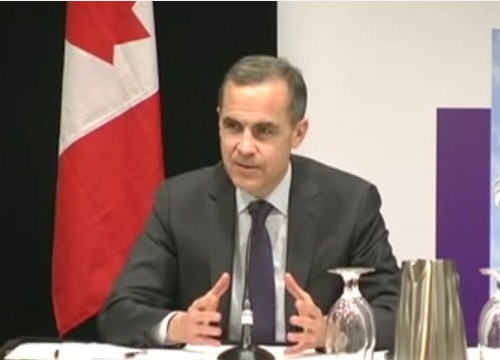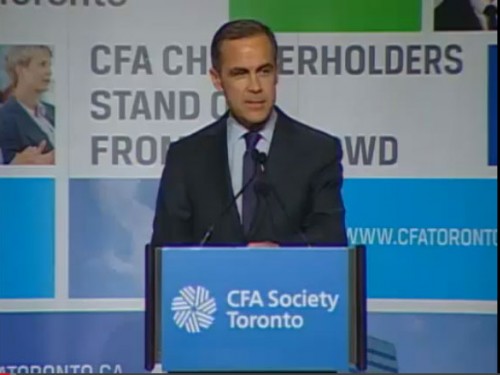Central Bank Policy Guidance May Be Most Useful in Extraordinary Times, Says Bank of Canada Governor Mark Carney
While transparency is critical to well-functioning capital markets and effective monetary policy, forward policy guidance is best used sparingly by central banks in normal times, Bank of Canada Governor Mark Carney said today. In a speech to the Toronto CFA Society, the Governor discussed where policy guidance can be most effective and when it may be warranted.
“Central banks pursue transparency to be accountable in democratic societies,” Governor Carney said. Clear, open communications also enhance the effectiveness of monetary policy. Success in this regard requires transparency around what policy-makers are trying to achieve and how they go about achieving it, he added.
Over time, the Bank of Canada has become significantly more transparent in discussing the forces affecting the Canadian economy, in order to help households, firms and financial market participants understand how monetary policy will respond over time. This communication not only promotes the appropriate formation of policy expectations, but allows those expectations to evolve efficiently as new information is received.
The Bank of Canada occasionally provides guidance in normal times to give a sense of the imminence and degree of prospective policy action, and the important economic and financial factors influencing policy, the Governor said. “This guidance is never a promise, however. Actual policy will always respond to the economic and financial outlook as it evolves. Expectations of policy should do the same.”
More explicit policy guidance may be most useful in extraordinary times, Governor Carney noted. For instance, in April 2009, when conventional monetary policy had been exhausted, the Bank of Canada provided additional stimulus by committing to hold the policy rate at its lowest possible level, conditional on the outlook for inflation. “Our conditional commitment worked because it was exceptional, explicit and anchored in a highly credible inflation-targeting framework,” he said.
Central banks needing to go further could also publicly announce precise numerical thresholds for inflation and unemployment. If additional stimulus were required, a framework change, such as adopting a nominal GDP-level target, may be worthy of consideration, Governor Carney said. He cautioned, however, that “the benefits of such a regime change would have to be weighed carefully against the effectiveness of other unconventional monetary policy measures under the proven, flexible inflation-targeting framework.”


